March 27, 2013
Category: microsoft, rds-2012
Tags: gateway, http-secure, https, rd-gateway, remote-desktop-connection, remote-desktop-gateway, remote-desktop-protocol, remote-desktop-services, secure-sockets-layer, server-2012, ssl, virtual-private-network, vpn
Deploying Remote Desktop Gateway RDS 2012
What is a Remote Desktop Gateway
A Remote Desktop Gateway Server enables users to connect to remote computers on a corporate network from any external computer. The RD Gateway uses the Remote Desktop Protocol & the HTTPS Protocol to create a secure encrypted connection.
A 2012 RD Gateway server uses port 443 (HTTPS), which provides a secure connection using a Secure Sockets Layer (SSL) tunnel.
A Remote Desktop Gateway Provides The following Benefits:
- Enables Remote Desktop Connections to a corporate network without having to set up a virtual private network (VPN).
- Enables connections to remote computers across firewalls.
- Allows you to share a network connection with other programs running on your computer. This enables you to use your ISP connection instead of your corporate network to send and receive data over a remote connection.
http://windows.microsoft.com/en-us/windows7/what-is-a-remote-desktop-gateway-server
Please see the following linkFor more information on deploying a Gateway on the perimeter network: http://blogs.msdn.com/b/rds/archive/2009/07/31/rd-gateway-deployment-in-a-perimeter-network-firewall-rules.aspx
Deploying a remote desktop Gateway
[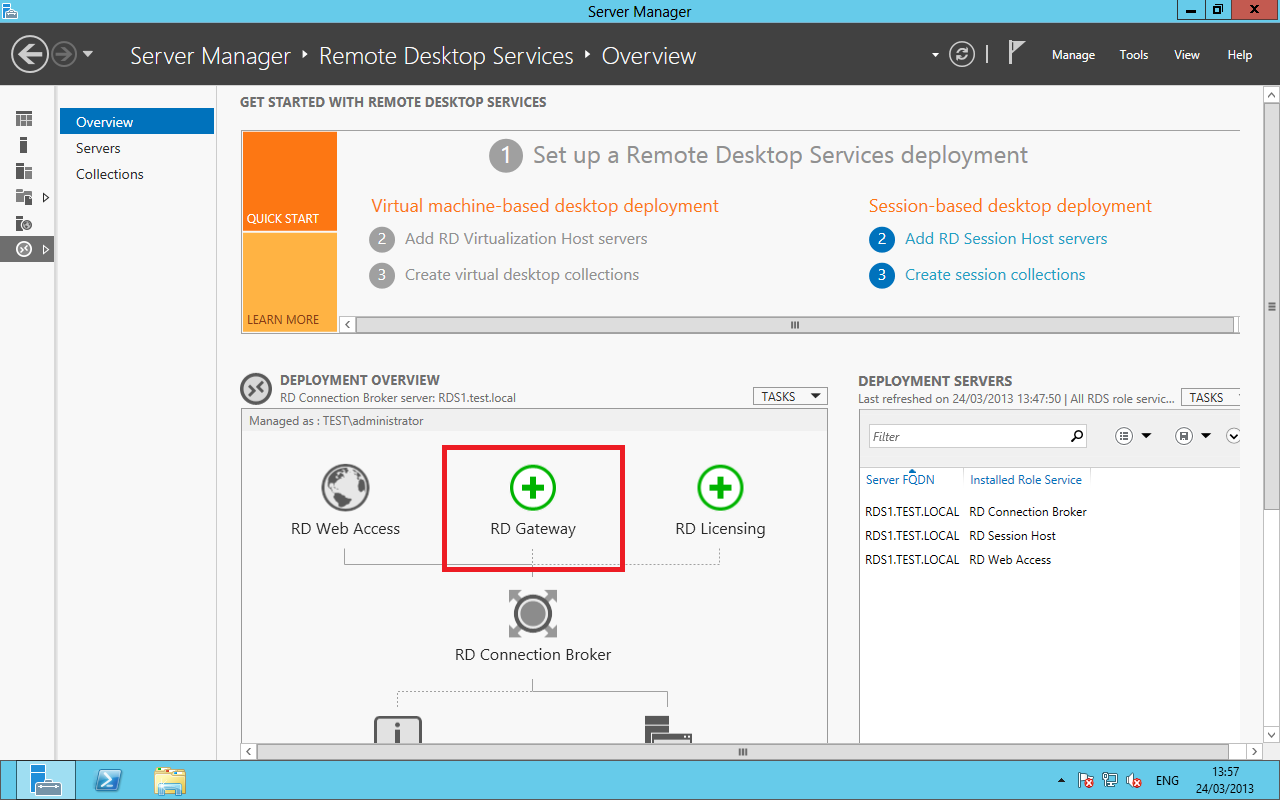 ](
](
To start the install, Click on the RD Gateway Icon Highlighted in green on the Deployment Overview.
[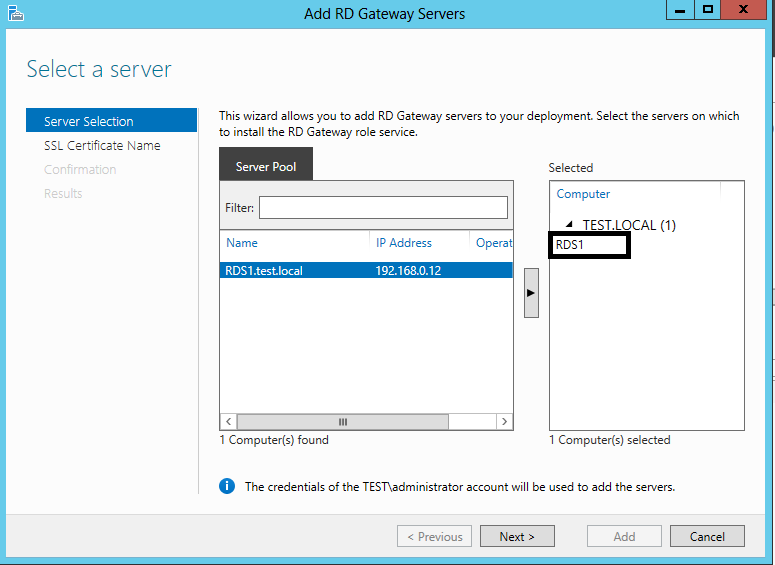 ](
](
Select the server you want to install the role on.
[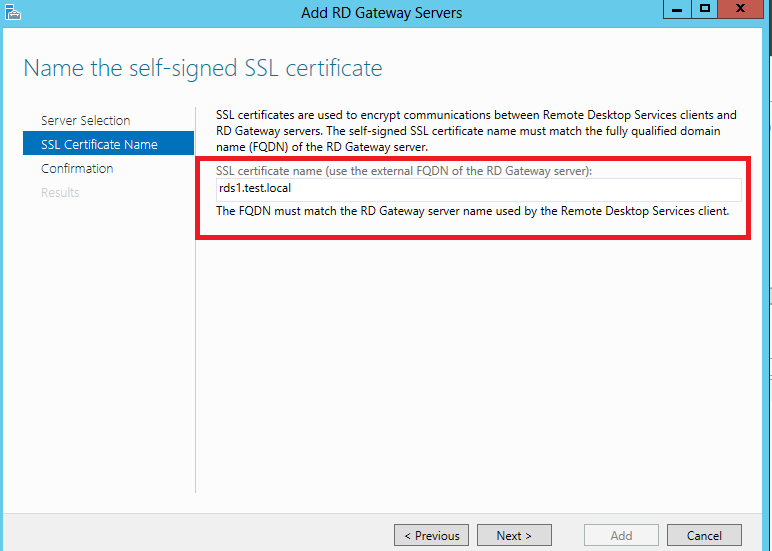 ](
](
Enter the External FQDN in the SSL Certificate Name (for this example I am using a internal address)
[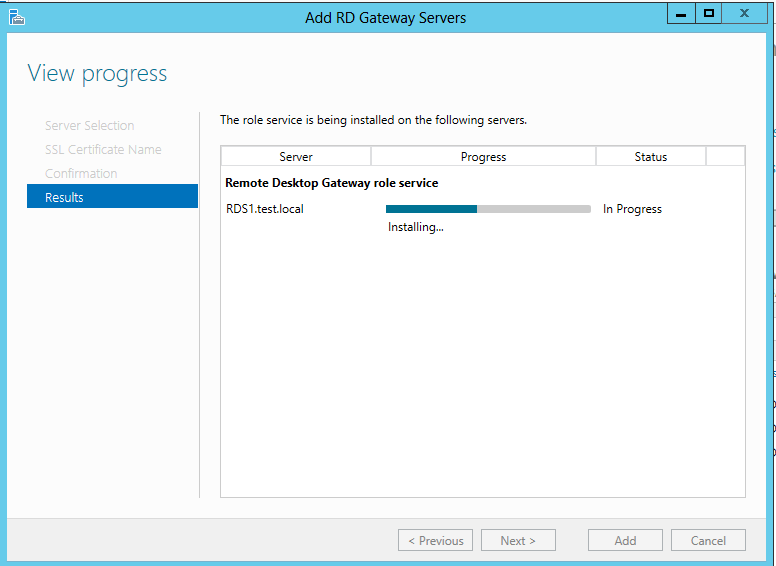 ](
](
RDS Gateway is installing............
[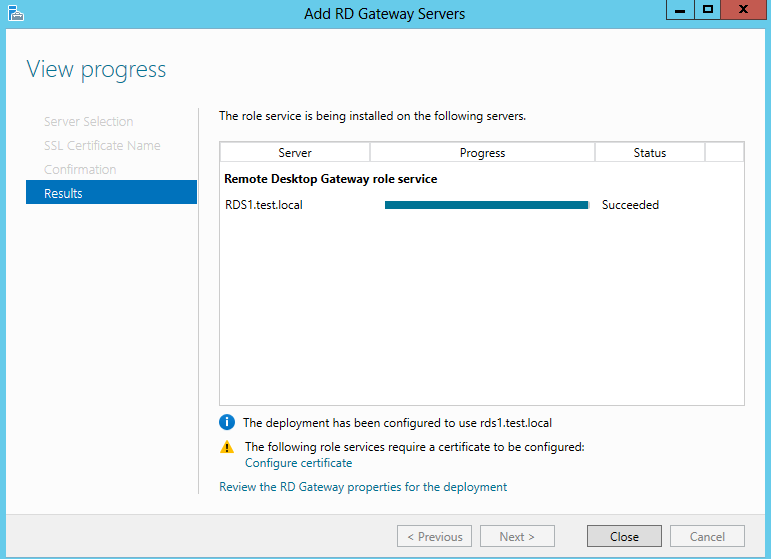 ](
](
[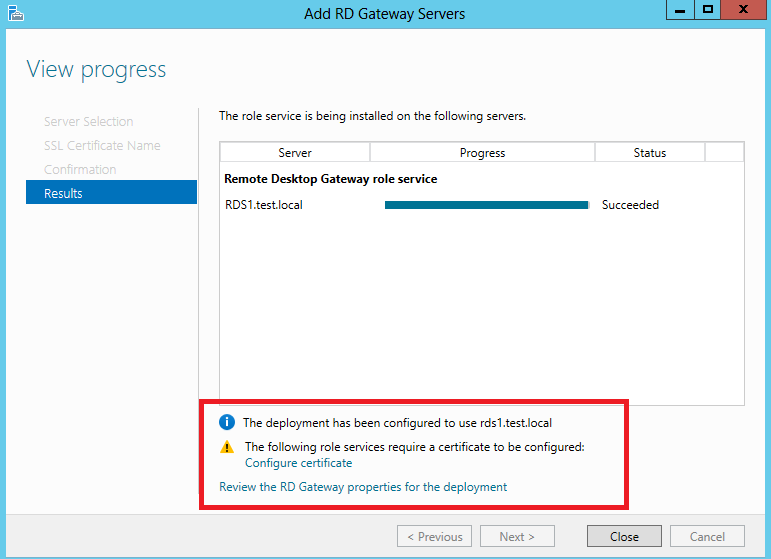 ](
](
Once the install is complete, you can use the links at the bottom of the install window to configure certificates and review the RD Gateway properties for the deployment.
[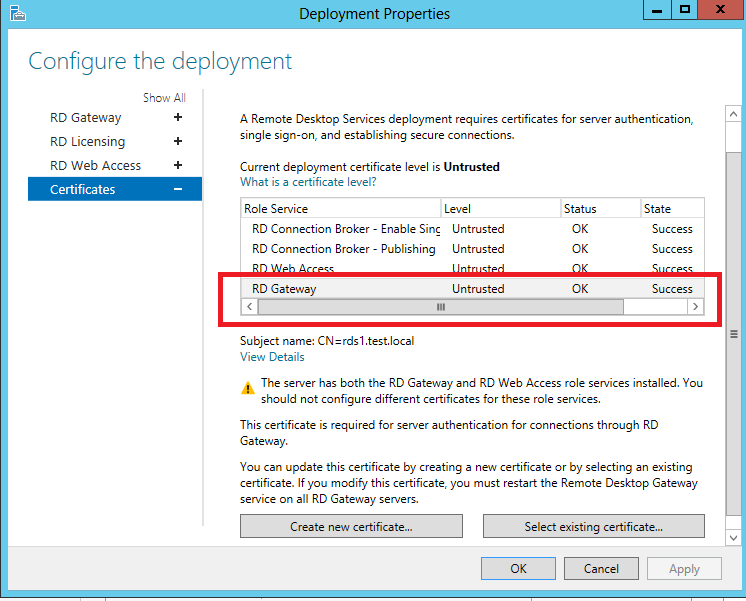 ](
](
As highlighted in red, you can seen the Gateway certificate located in the deployment properties under certificates.
[ ](
](
Under the Tab RD Gateway, you can configure the login method and basic gateway settings.
[ ](
](
Once the gateway is installed you will see the RD Gateway symbol appear.
Configuring the Gateway Manager
[ ](
](
by right clicking on the local gateway server, you can open the properties.
[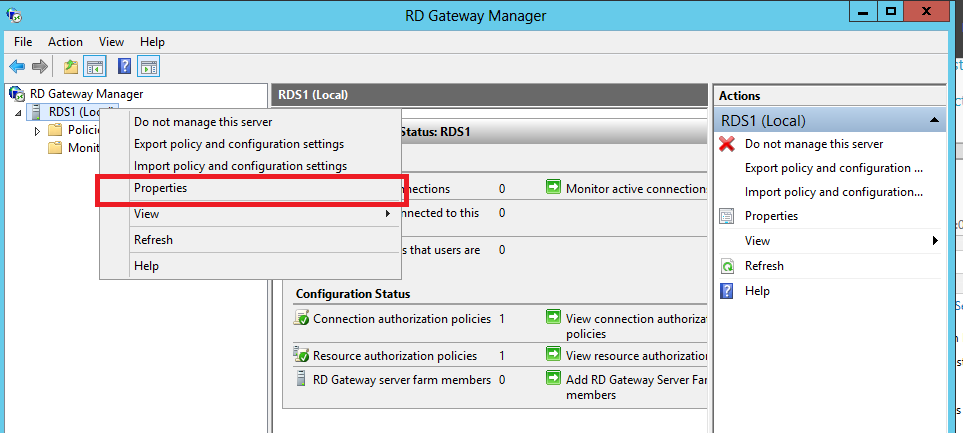 ](
](
You can configure the advanced gateway settings by navigating to the Properties.
[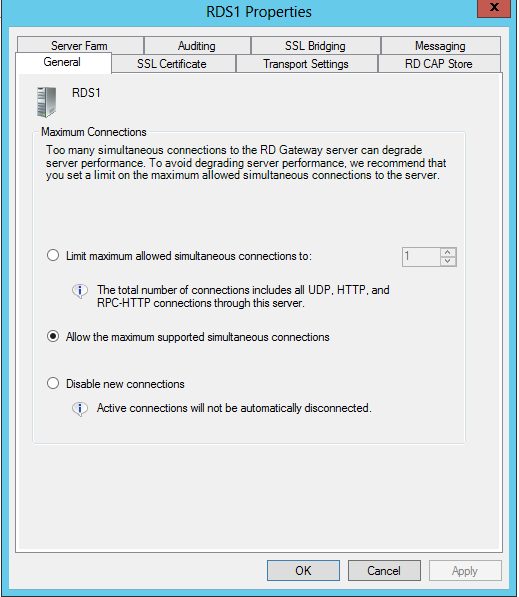
The General tab allows you to configure maximum connection.
[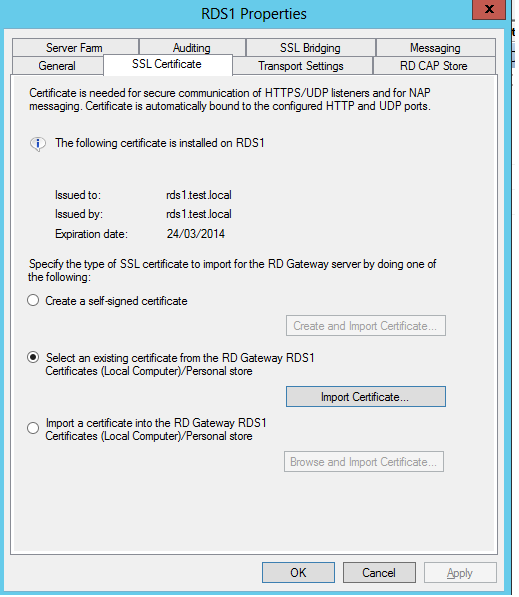
The SSL Certificate tab allows you to import a external certificate, create a self-signed and import from a personal store. I would recommend that you assign all certificates and apply the RD Gateway Certificate last. This is the certificates are not modified by the certificate tab in the RDS deployment properties.
[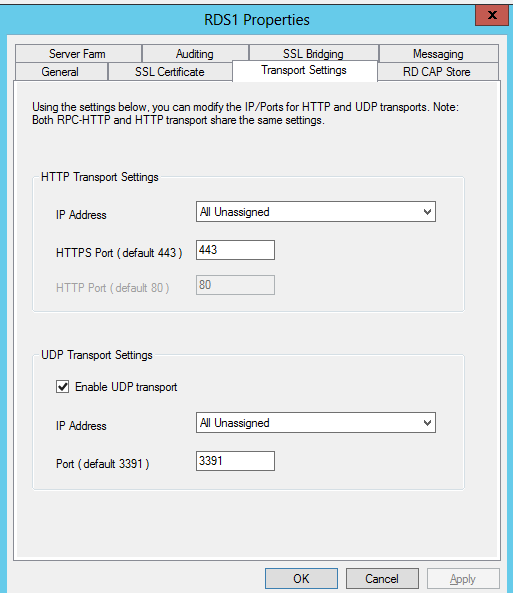
The Transport Tab allows you to configure RCP-HTTP and the HTTP settings. You can change the defaults to meet corporate security requirements.
[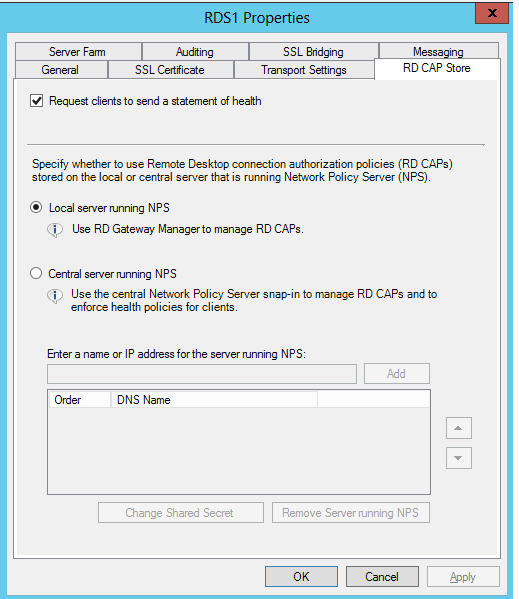
The Remote Desktop Connection Authorisation Policies (RD CAP) store enables you to configure local or central NPS Services for centralised management.
[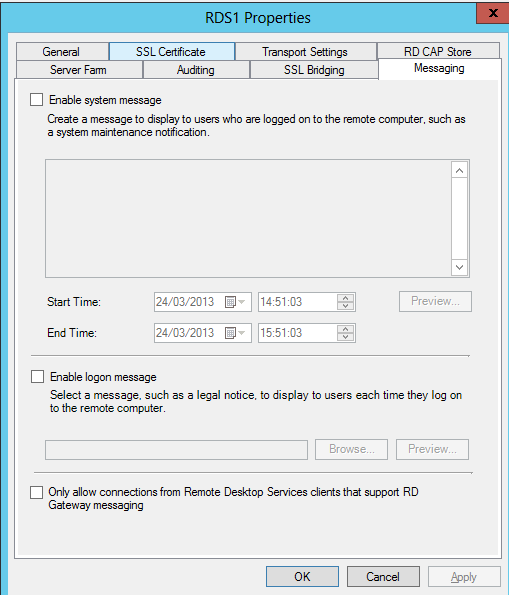
The Messaging tab is great for notifying users of outages and maintenance times or other administrator messages.
[
Please see the hyperlink below for information on SSL Bridging and tunnelling.
http://www.isaserver.org/tutorials/Understanding_SSL_bridging_and_tunneling_within_ISA.html
[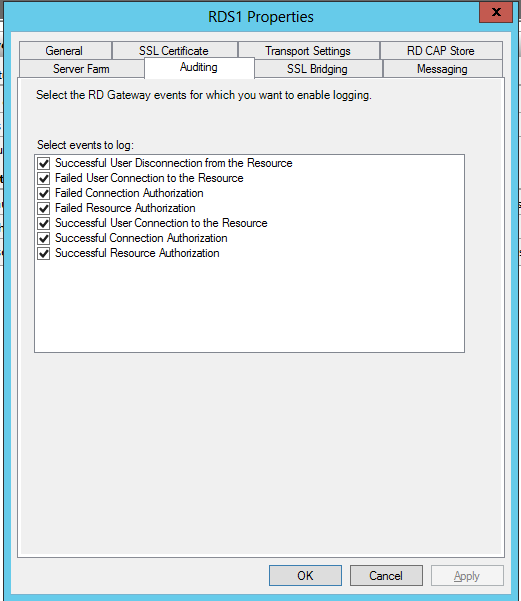
The Auditing tab allows you to select what to audit in the log files.
[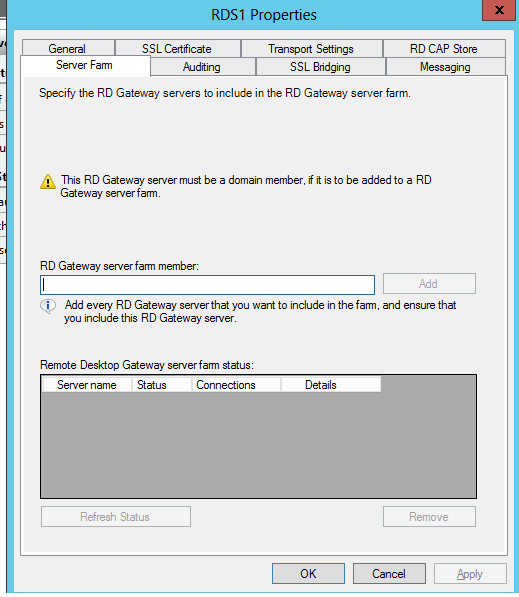
The Server Farm tab allows you to configure multiple Gateway servers for use in a farm (High Availability).
[ ](
](
Connection Policies allow you to configure user access.
[
[
[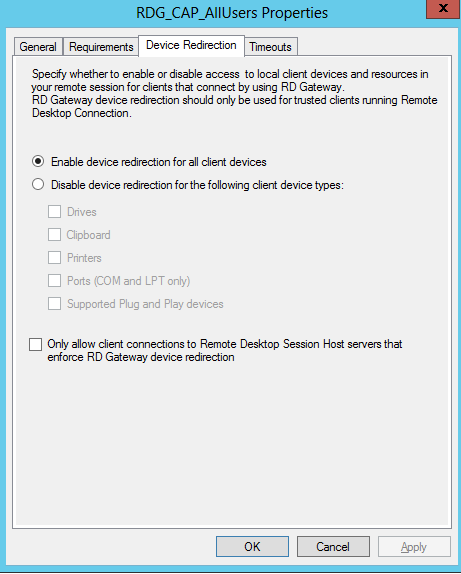
You can disable the redirection features for enhanced security.
[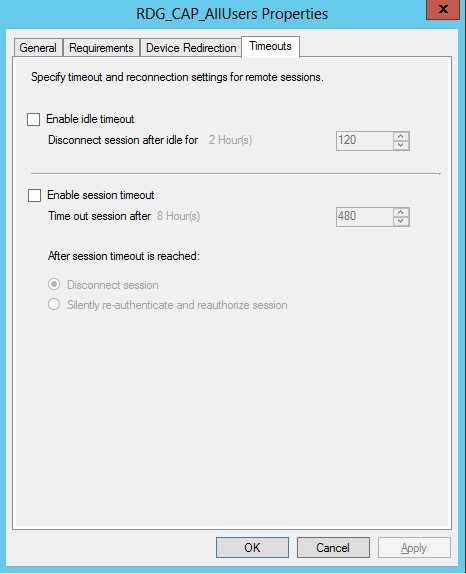
The Timeouts Tab allows you to limit client sessions.
[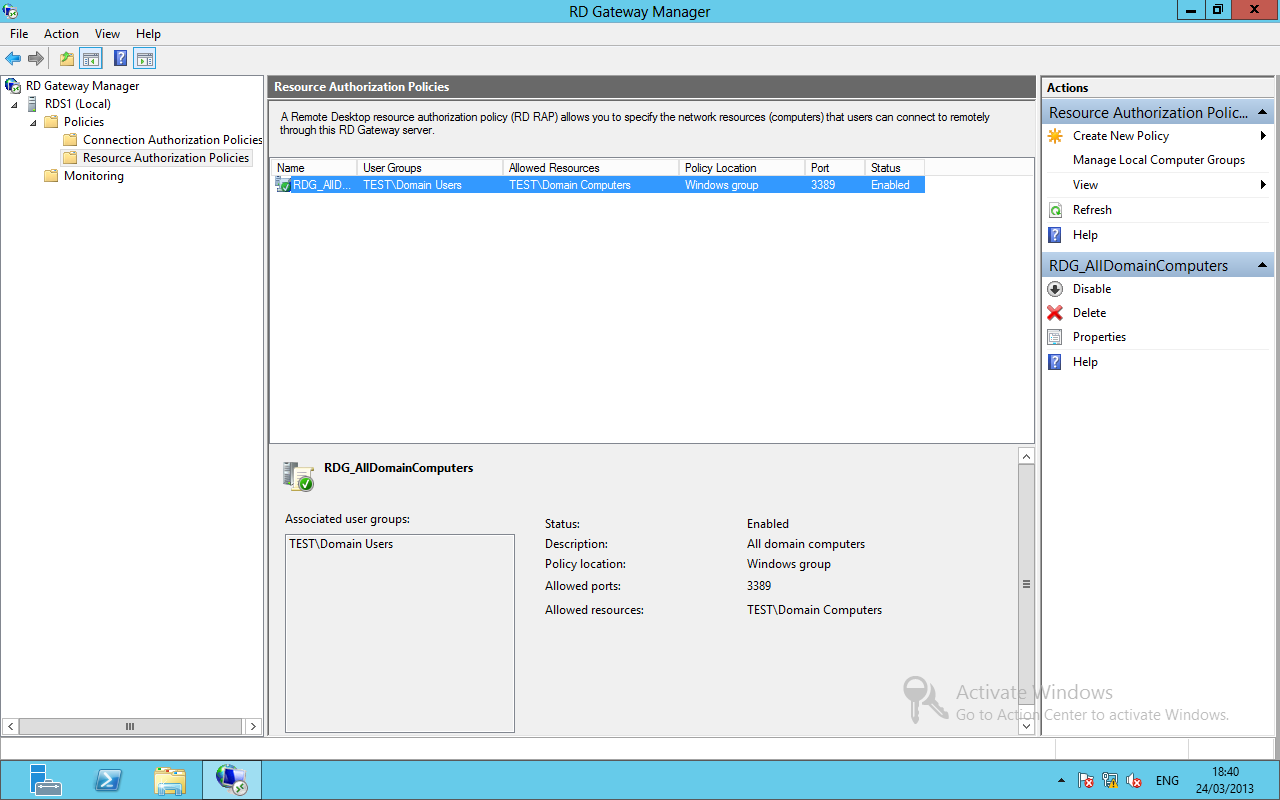 ](
](
Resource authorisation Policies allow you to specify the network computers that users can connect to.
[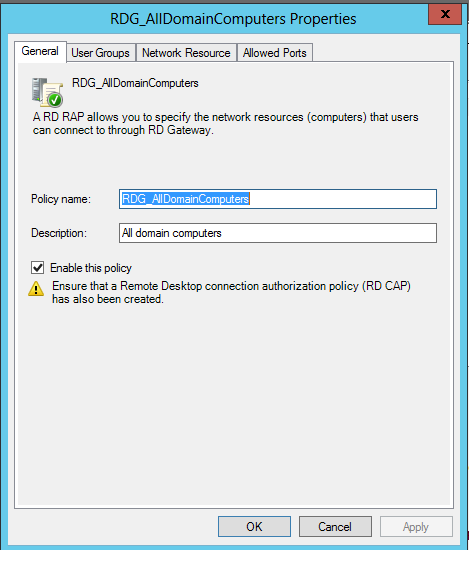 [
[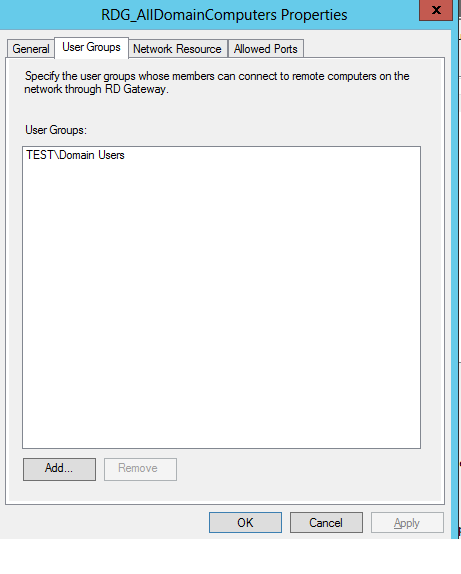
You can define user access in user groups tab.
[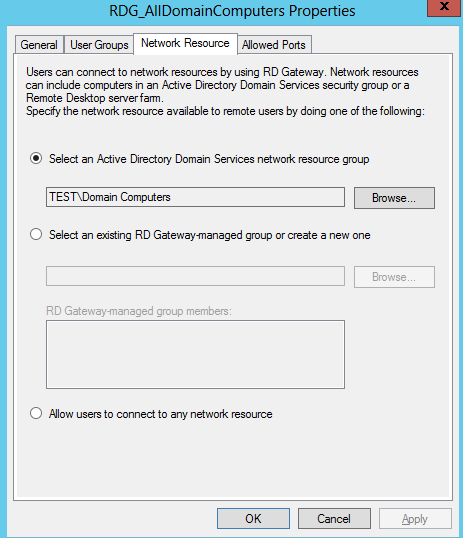
The Network Resource tab is used to specify the network resources.
[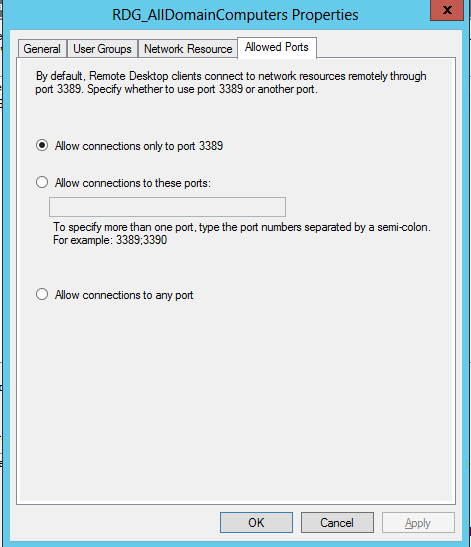
The Allowed ports Tab enables you can change the ports to enhance security.
Creating Computer Groups
when creating a High available Connection broker configuration or a Remote desktop session server Farm you need to create server groups using the manage locally stored computer groups.
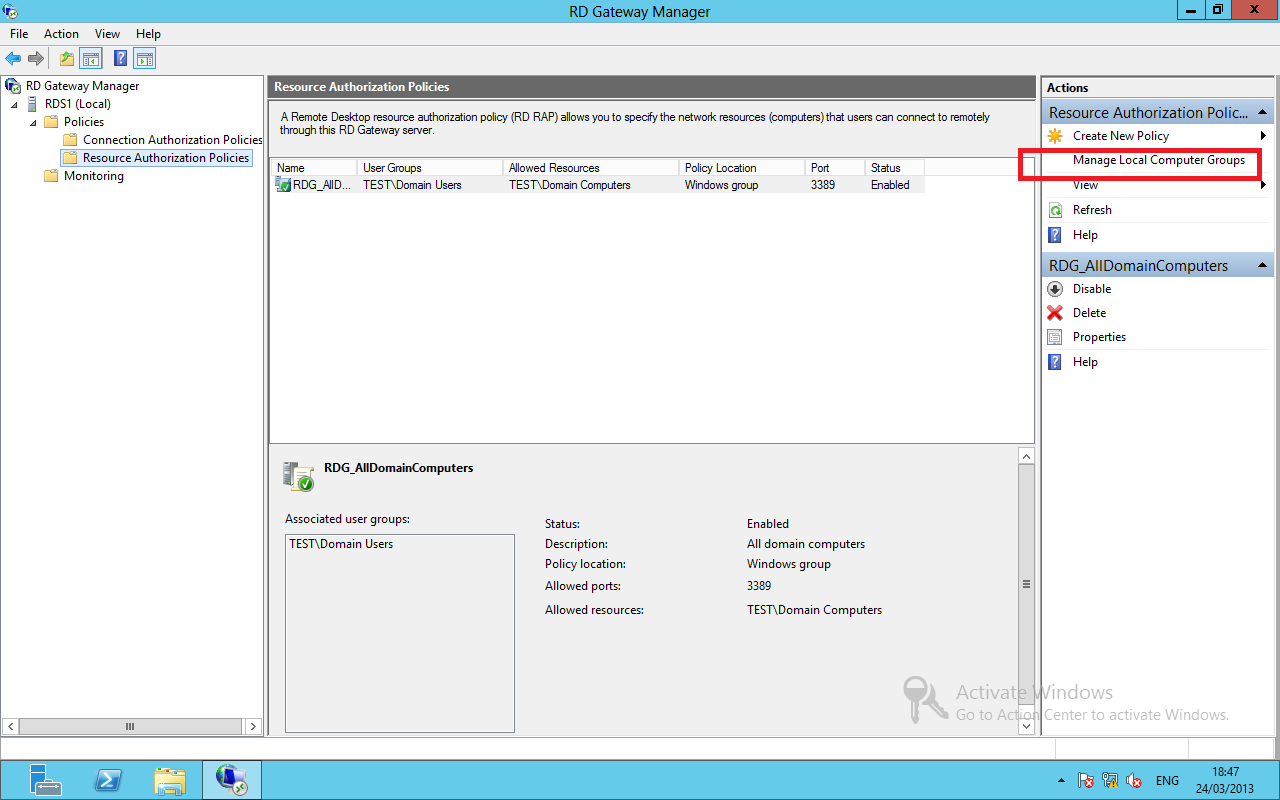
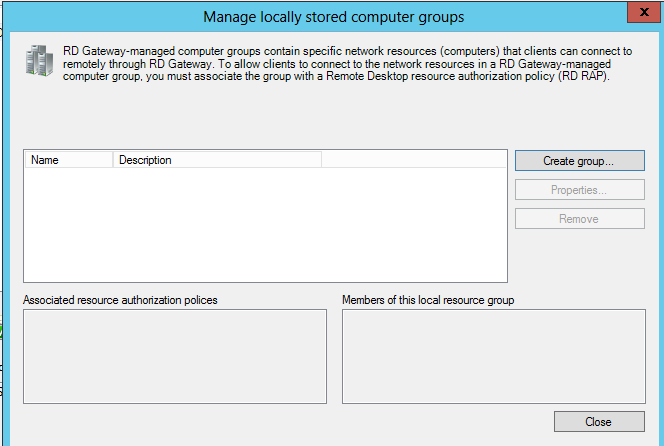
Click Create Group
[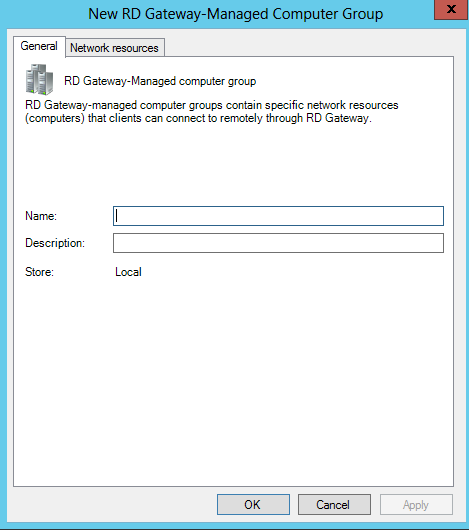
enter the name and the description of the computer group
[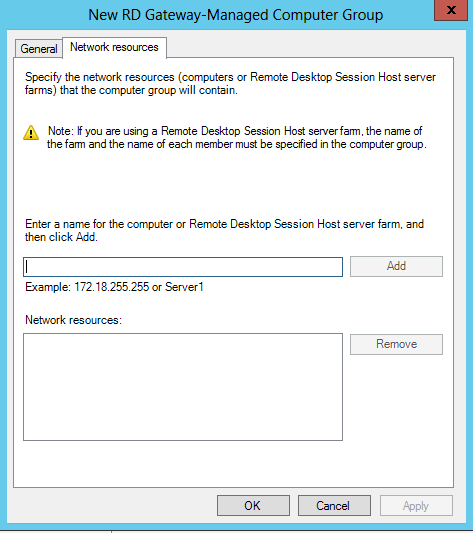
For connection brokers and RDSH servers, you need to add the servers and the farm name as mentioned in this tab.
